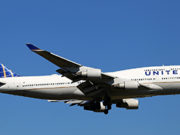The global aviation industry is expected to need 804,000 new civilian pilots over the next 20 years, along with 769,000 new maintenance technicians and 914,000 new cabin crewmembers, Boeing said in its annual Pilot & Technician Outlook, released Monday.
The projections apply to commercial aviation, business aviation and the civil helicopter industry.
Boeing’s report said that the demand will result from the growth of the aircraft fleet, as well as retirements and attrition of personnel.
“Meeting this strong demand will require a collective effort from across the global aviation industry,” Boeing said. “As several hundred thousand pilots and technicians reach retirement age over the next decade, educational outreach and career pathway programs will be essential to inspiring and recruiting the next generation of personnel.”
Of the 804,000 new pilots expected to be needed, 645,000 will be in commercial aviation, 98,000 in business aviation and 61,000 in the helicopter industry, the outlook said.
The need will be greatest in the Asia-Pacific region, which will be seeking 266,000 new pilots, the forecast says. In addition, North America will need 212,000 new pilots; Europe; 148,000; the Middle East, 68,000; Latin America, 54,000; Africa 29,000 and Russia and Central Asia, 27,000.
Of the 769,000 new maintenance technicians, 632,000 are expected to be needed in commercial aviation, 93,000 in business aviation and 44,000 in the helicopter industry.
The need for maintenance technicians also will be greatest in the Asia-Pacific region, where 266,000 new technicians will be needed, followed by North America, which will be seeking 193,000, the report said. In addition, Europe will need 137,000 new technicians; the Middle East, 69,000; Latin America, 52,000; Africa, 27,000; and Russia and Central Asia, 25,000.
The Asia-Pacific region also leads in forecast demand for cabin crew; the region is expected to need 327,000 new cabin crewmembers. Europe is forecast to need 194,000; North America, 176,000; the Middle East, 104,000; and Latin America, 53,000. Africa and Russia and Central Asia both are forecast to need 30,000 new cabin crew. Ninety-six percent of those new cabin crewmembers will be needed in commercial aviation and the rest, in business aviation, the report said.
